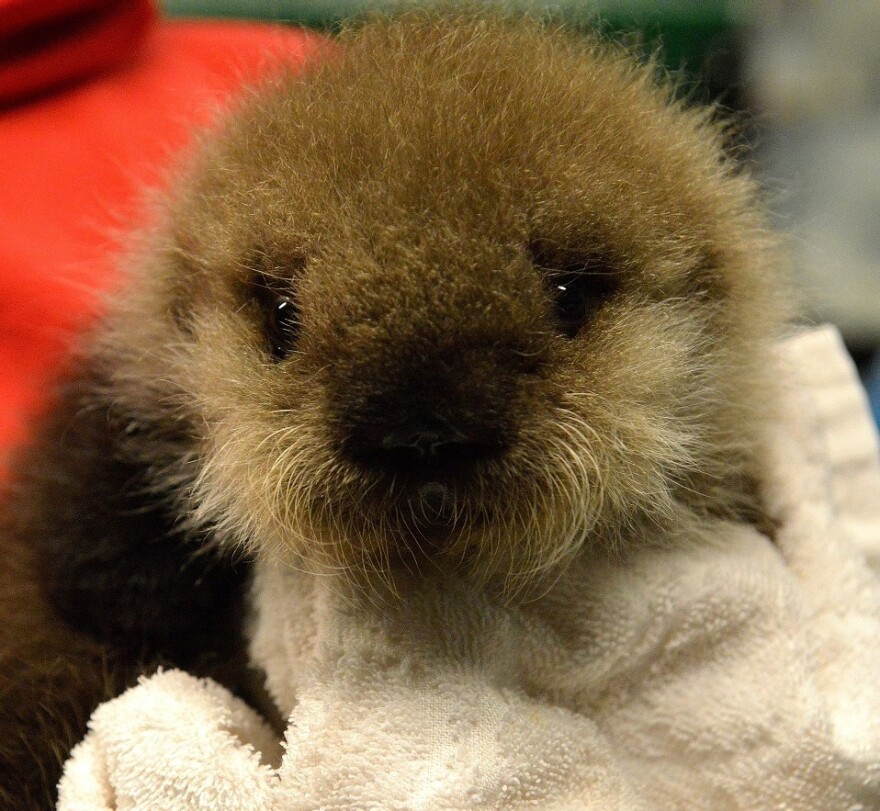In coastal Alaska, a bacterial infection has caused adult sea otter die-offs in record numbers. Meanwhile, researchers have seen a steep increase in the number of orphaned pups over the last several years.
In North America, the places where rescued pups would normally live out their lives are nearly full, putting volunteers in a tough spot.
Until recently, when an orphan sea otter was found on a beach, volunteers helped get it out of harm’s way and into rehabilitation.
The Alaska SeaLife Center in Seward was the only place that would accept orphan pups.
Animal Husbandry Director Brett Long is in charge of caring for the baby otters. While that might sound like a dream job, don’t be fooled: it’s hard work.
“It’s the screaming child, right? Hey, it’s your turn to take care of it,” said Long.
All four of the otter pups at the SeaLife Center are orphans. Over the last several years, a strain of Streptococcus bacteria has been killing Alaska’s sea otters.
Since 2002, an estimated 328 otters have died statewide from the infection. That means more orphan pups to care for.
Long coordinates a team that cares for the pups round-the-clock. Because of their fast metabolism, sea otters eat about 25 percent of their body weight in seafood every day.
He opens a heavy metal door, revealing a freezer the size of a studio apartment.
“We’ve got smelt, squid, herring, pollock, capelin and mussels,” he said, pointing to cardboard boxes lining the shelves.
It’s not just feeding that’s time-consuming. Because many of the pups are too young to know how to groom themselves, the staff has to do it for them. They use blow dryers, towels and combs to clean the fur and fluff it up.
For Long, the demanding nature of the work feels familiar.
“I had two nephews that were born 3 months early, so the first three months of their life was in a neonatal care ICU. That’s what raising sea otters is like. It’s a little beauty salon mixed with a neonatal ICU,” he said.
As the pups grow older, trainers work with them individually to help prepare them for lives in education centers. In an outdoor enclosure, trainer Juliana Kim teaches Tongit how to roll on his back and accept a fish. The pup arrived at the SeaLife Center last spring, after turning up in a Cordova parking lot.

The SeaLife Center isn’t equipped to keep the pups forever. Eventually they’ll be moved to educational facilities or aquaria, either in the U.S. or abroad.
But the options for orphan otters are becoming fewer and fewer. Only a limited number of facilities meet the strict requirements set by the U.S. Animal Welfare Act, allowing them to accept otters.
According to estimates from the Association of Zoos & Aquariums, there are only 14 facilities licensed in North America.
Debbie Tobin is a biology professor at Kachemak Bay Campus of Kenai Peninsula College in Homer. She also volunteers for the Marine Mammal Stranding Network.

“You have to have the right aquarium or facility or zoo to house a sea otter. It’s an expensive and difficult task to take on a sea otter if you don’t already have the set-up for that,” said Tobin. “Many of the facilities in the U.S. are essentially full.”
That means rehab facilities are now turning pups away. Although the four pups at the SeaLife Center since moved to new homes, the facility has no plans to accept more.
Now when volunteers like Tobin find orphan pups, they have to leave them be.
“We’ve had to physically put them back laying on the beach knowing that very likely you come by the next day and they’re either there dead or they’ve been scavenged,” said Tobin. “If you’re lucky they’ve washed out to sea and you don’t know what happened to them. Oftentimes, we go out the next day and they’re dead lying on the beach.”
Leaving pups on the beach is a bitter pill to swallow for Tobin.
“It’s really, really hard to put that actual pup back down on the beach and walk away,” said Tobin.
Several organizations are in the process of applying to become certified to house otters. But if the current pace of adult otter die-offs continues, it’s unlikely there will ever be enough facilities to keep up with the demand.




